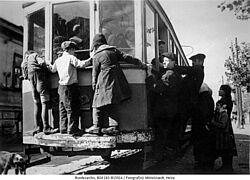Kiev at War (1937-1947): A Multifaceted Study on the German Occupation, the Reign of Violence, the Persecution of Jews and the Aftermath of the War
Kiev’s population numbered around 930,000 residents when Germany invaded the Soviet Union in June of 1941, but by November 1943 only roughly 70,000 remained. This dramatic development has so far seen little coverage outside of Ukraine. Research has focused nearly exclusively on the Babyn Yar massacre of over 33,000 Jews in September 1941, while the questions of the connection of this crime with other acts of violence during the occupation era (such as the death en masse of Soviet prisoners of war) is almost never discussed. Thus, the drastic fall in the number of the city’s inhabitants has rarely been explored.
This project searches for answers to these and other questions. The example of Kiev will be used to depict and analyze the lives and deaths of Jews and non-Jews between 1937 and 1947, i.e. between the beginning of the “Great Terror” and the complete reestablishment of Soviet rule. How did Stalinist mass terror, the crimes of the German occupation, and the resumption of repression change the city as a physical and social place? The goal of the study is a multifaceted description of the everyday lives of the people in Kiev and their social environment. It will therefore not only look into institutions and the actions of the various holders of power, but also into how the societal space changed. Specific life stories thus play a particular role in the study. These will illustrate the upheavals brought about by Stalinism, war, and occupation. Around a dozen different biographies serve to demonstrate various scopes of action. This method also allows for a diachronic view, looking into various influences beyond the period in question

